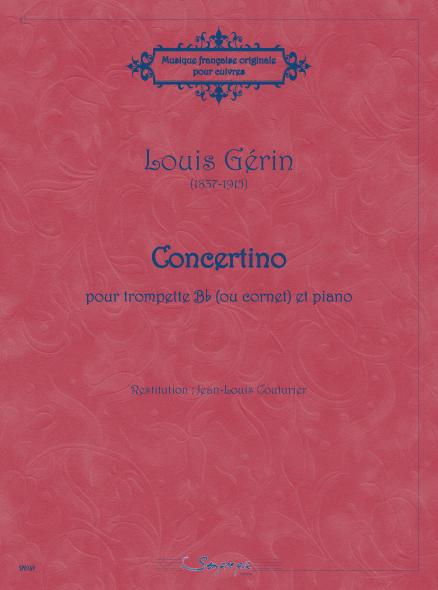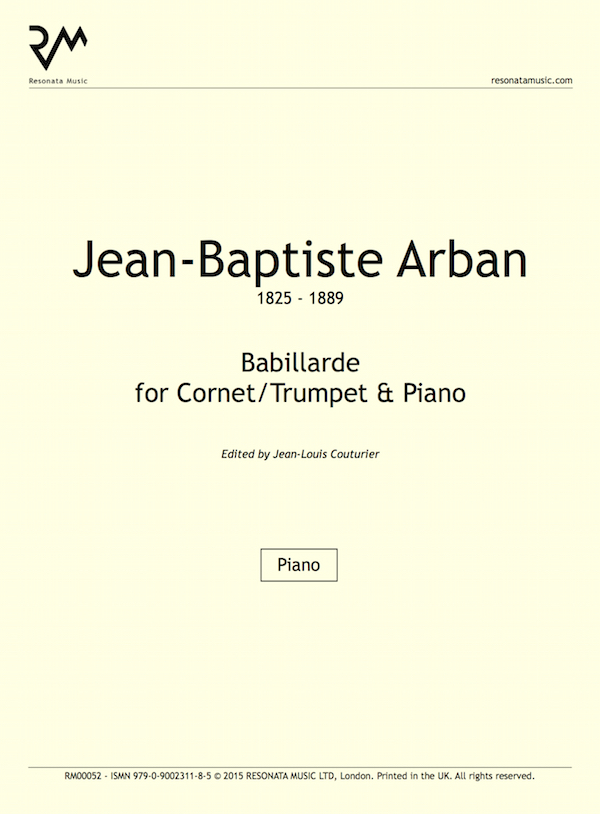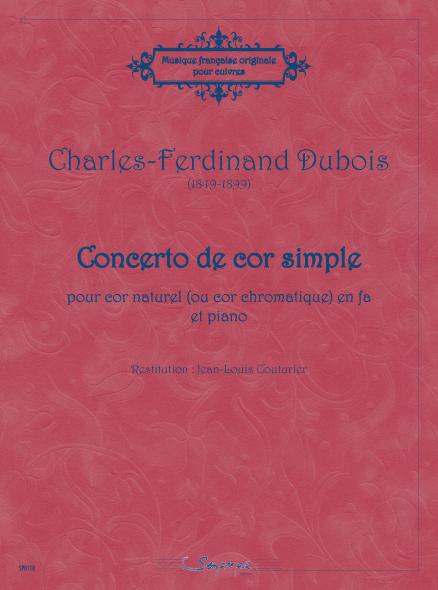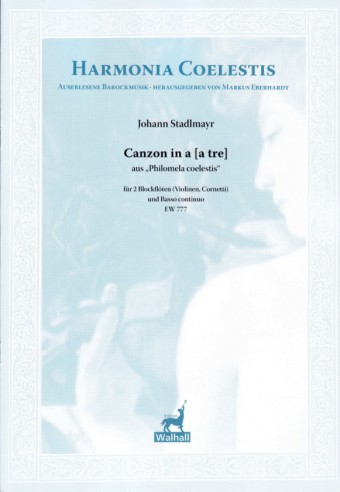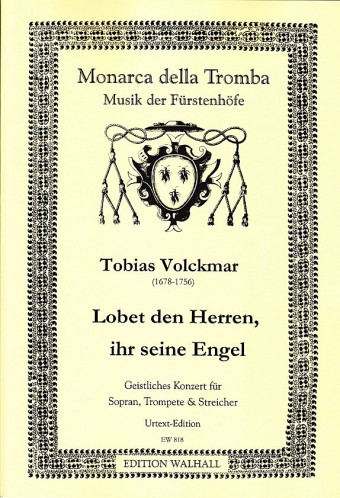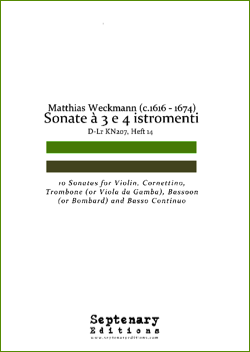
Matthias Weckmann, Sonate à 3 e 4 istromenti, D-Lr KN207, Heft 14: 10 Sonatas for Violin, Cornettino, Trombone (or Viola da Gamba / da Braccio), Bassoon (or Bombard) and Basso Continuo. Ed. Helen Roberts. Frome, UK: Septenary Editions, 2013.
Septenary Editions is a relatively new publishing house started in 2013 by instrumentalists Helen Roberts (cornetto) and Caroline Ritchie (viola da gamba), in order to create practical editions of early music for performance. According to Roberts, they “specialize in previously unpublished material and under-represented composers and works, using both pdf downloads and printed formats.” Their company is not-for-profit—perhaps some issues with the printed edition may be due to this situation. Proceeds go towards creating bursaries that unaffiliated researchers may apply for, in order to acquire digital copies, microfilms and library permissions, or to cover any other expenses incurred in working with any primary sources necessary for creating an edition.
Certainly publishing Matthias Weckmann’s ten sonatas fulfills both the company’s goals and the need for a modern edition of these beautiful and virtuosic pieces by a relatively unknown composer. Weckmann (ca. 1616–74), an organist, was probably the finest student of Heinrich Schütz and a good friend of another Schütz pupil, Christoph Bernhard. In addition, he studied with Jacob Praetorius (a student of Sweelinck) and Heinrich Scheidemann, working in the early part of his career at the Elector of Saxony’s court in Dresden and the Danish royal court at Nykøbing. In 1655 he won the organ positions at both the Jacobikirche in Hamburg and the Gertrudenkapelle, with which the church was associated, and spent the rest of his career there. These sonatas were composed between 1660 and 1674 for the Collegium Musicum that Weckmann founded in the Hanseatic League in 1660. Unfortunately the foreword of this edition by Roberts does not provide much of this information, and some of what is presented is incorrect. Weckmann was never a Kapellmeister at Dresden—he was a court organist, but the highest position he attained there was as inspector of the electoral chapel. Weckmann founded the Hamburg Collegium on his own, and I remain mystified by the phrase “he was influenced heavily by the English virginalists he met during his employment in Dresden and Copenhagen.” The term “virginalist” in itself is rather old-fashioned, referring to the generation of Byrd, Tomkins, Gibbons, and Bull (a full generation before Weckmann), and is rarely used nowadays since these musicians played other keyboards as well. Perhaps the author means English musicians or composers, as both were plentiful at these courts. The English virginalist John Price was at Dresden from 1629 to 1633, but Weckmann was very young at this time, and still a discantist. The only reference I could find associating Weckmann with English virginalists is in Gerhard Ilgner’s tome of 1939. Here Ilgner was refers to Hamburg, when Schütz took Weckmann there to study with Praetorius, not Copenhagen, and to music, not performers, although later in the book he names string players and instrumental composers. Ilgner mentions English virginalists again in his preface to his edition of the sonatas, referring to both Hamburg and Copenhagen, in a phrase including lutenists and violinists in the case of the former city, and violinists in the latter. Weckmann was most profoundly influenced by his German teachers, and certainly there is no study concerning an English influence in Weckmann’s compositions. Roberts neither states that Weckmann composed relatively few works nor mentions the existence of a fragment for an eleventh sonata. In addition, she does not describe the source (D-Lr [Lüneburg, Ratsbücherei] KN207, Heft 14) or the music, gives no dates for the sonatas, makes few editorial remarks, and provides no performance practice suggestions. Perhaps the inattention to the foreword is endemic of the not-for-profit situation.
An edition of the ten complete sonatas is, however, badly needed and most welcome. There is the one mentioned above by Ilgner in Das Erbe deutscher Musik, Reihe 2: Landschaftsdenkmale der Musik. Schleswig-Holstein und Hansestädte published in 1939, but it is very difficult to acquire. Septenary’s editor, Roberts, does state that Ilgner’s edition was used as a point of reference for hers, although the barring is different—Ilgner modernizes everything, providing courtesy accidentals and some suggestions for ficta and figures. Music Rara produced an edition of the first sonata, edited by A. Lumsden in 1957, although without editorial commentary. Roberts provides little editorial interference in the edition, stating “[D]ecisions regarding additional accidentals and musica ficta are left to the discretion of the performer.” While early music practitioners will applaud this, as a teacher I think that some editorial suggestions would benefit students and would also avoid confusion. For example, I would prefer that the 3/1 section in Sonata 2 have a barline after every three whole notes, rather than follow the original. There are also times when courtesy accidentals would be helpful. For example, in Sonata 3, the many repeated c1-sharps in m. 29 of the bassoon part not only look odd, but the number of them (4) differs from the score (6). In m. 54 of the same piece, the third c2 in the cornettino part has no sharp, implying that it is natural despite the sharps on this pitch found within the phrase before and after it. Ilgner adds an editorial sharp here, and a courtesy natural for the fifth c2 that follows in the next phrase.
Major concerns about this edition, however, pertain primarily to the layout of the parts, the print, and its general look. My overall comment is that the size of the notes and especially the figures is too small. I normally play through continuo parts when doing a review, but the print size for notes and figures in the score is so tiny that this was impossible. The most difficult figure to see is the raised scale-degree 6 that is replicated here as a 6 with a caron above (v), which is almost invisible, and not explained in the editorial remarks. Apparently even youthful eyes have a hard time reading these parts. Sometimes a flat or sharp is placed too close to a note stem, note head or dot. The black notes appear very odd, often looking like horizontal figure eights that have been filled in with ink. The directives should be regularized and positioned in the same place for all parts. Stating the complete instrumentation for each piece in the upper right corner and slightly below the title in the parts, rather than centered directly under the title, is confusing. There is an awkward page turn in the basso continuo part that could have been avoided if the music for Sonata 1 had started on the recto, so that Sonata 2 could start on the verso, thereby avoiding this situation. Decisions should have been made so that parts could start on the verso or recto, as appropriate for that individual part. For example, although the Violin part has a two-measure rest to allow for a page turn in the second and third sonatas, this turn could have been avoided entirely if Sonata 2 had started on the verso. In addition, some single measures are spread out over an entire system, which is confusing and unnecessary. This happens several times: cornettino, Sonata 2, mm. 22–23, 34–36; violino, Sonata 1, m. 21; Sonata 2, mm. 22–23, 34–35; trombone, Sonata 2, m. 19–21, 26–28, 31–32; and bassoon, Sonata 2, mm. 19, 23, 26–28, 37–40. The cause of some of these issues could be the music program being used, especially the part-extraction feature. As a creator of many editions using a music program, I have learned that one needs to really proof and fiddle with the parts to get them to look right before presenting them to the public. As a performer, I much prefer to read off my old Musica Rara parts rather than those of this new edition, simply because I can see everything clearly.
Despite these issues, I must commend Septenary Editions for their initiative in publishing lesser-known composers and their music, and admire them for doing so as a not-for-profit company. I hope they will be able to make some adjustments to their music program to improve the readability of the figures and parts so that all can enjoy performing this wonderful music.
Charlotte A. Leonard


